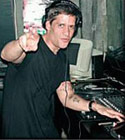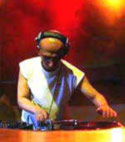The second edition of The New Grove Dictionary of Music and Musicianswas launched in January 2001 and sought to keep pace with changes in musicology worldwide, and in the English-speaking world in particular. The inclusion of an entry on “Gay and Lesbian Music,” by Philip Brett and Elizabeth Wood, represented one more stage in the process of institutionalization of a new field of study officially acknowledged by the American Musicological Society in 1989 with the foundation of its Gay and Lesbian Study Group (GLSG). The Grove commission also represented a significant step towards the tacit acceptance of “changes within musicology and criticism brought about by the belated impact of poststructural interdisciplinary ways of thinking” (Brett and Wood, “Lesbian”). So far as Grove is concerned, this impact translated into a series of articles on attitudes and ideologies: “feminism,” “gay and lesbian music,” “Marxism,” “nationalism,” “Nazism,” “socialist realism.” As Michael Church gathered from an interview with Grove co-editor Stanley Sadie for the British newspaper The Independent a few days before the official launching, “the discussion of homosexuality gave a lot of problems”:
Sadie has an article on gay and lesbian music, whose authors — a male Brit and an Australian female — initially wanted it billed as ‘lesbian and gay music.’“I said no to that, and I also suggested that ‘gay’ covered both sexes, but they said no to that. In fact, I said no to quite a lot of things. They wanted to list gay and lesbian composers, and I said you can’t do that without specific permission if they’re alive, and I didn’t like it being done if they were dead.” He pours scorn on the sexual fellow-travelers who now claim Schubert as gay. “The evidence is non-existent, but you can’t say that in America without being branded a homophobe.”
Since Wood and Brett were allotted 2500 words, and wrote almost five times as much, they expected cuts. These came not as they feared in the more theoretical sections, but in targeted areas such as names, popular music, and the role of women. Though some living lesbian and gay musicians were included, Sadie excised all those thought to be uncomfortable about their sexual orientation’s being publicized, beginning with Boulez. “Our editor … viewed our topic as an exclusively (North) American concern, and did a good deal to enforce that opinion” (Brett and Wood, “Lesbian”). The editors altered large sections on popular music, disrupted the balance the authors had sought to strike between lesbian and gay musicians, and changed the title to “Gay and Lesbian Music.” Finally, the Grove editors rejected the authors’ desire “to relate the gay and lesbian movement post-Stonewall and the appearance of lesbian and gay perspectives/studies in music in the 1990s to political and intellectual contexts and developments” (Brett and Wood, “Lesbian”).
What Brett termed “the unexpurgated full-length original article,” “Lesbian and Gay Music” (as opposed to “Gay and Lesbian Music,” the excised Grove version), first appeared in the GLSG Newsletter in the Spring 2001 issue. In the same issue, Ivan Raykoff’s “Comparative Notes” collated the Grove and GLSG texts. For the Electronic Musicological Review, I took the GLSG Newsletter as a starting point, adding a few alterations as requested by the authors, illustrations, sound excerpts, a Portuguese translation including fifty-six explanatory notes, mostly derived from an extensive correspondence with Brett, Wood, and other members of the academic and/or lesbian and gay communities.
In its original online format as published in the Electronic Musicological Review, “Lesbian and Gay Music” is divided into eleven sections. The first, an “introduction to the original version,” reports on the vexations of the editorial process: “[it] was like having teeth pulled” (Brett, e-mail message of 4 January 2001 to the GLSG list). The second section, “(homo)sexuality and musicality,” tackles the relationship between both terms, and the manner in which that relationship was obliterated in many historical accounts. From here, Wood and Brett recount the history of the homosexual liberation movement as it relates to academic research in music, opera, ballet, pantomime, women’s music, and lesbian/gay bands and choruses. Then, they discuss issues of homosexuality in “musical theatre, jazz and popular music,” with particular reference to popular songs. The fifth section, “music and the AIDS/HIV crisis” recounts the conservative reaction that followed the epidemic, as well as the wave of support for lesbian and gay issues that flowed from both artists and the population at large. “Developments in the 1990s,” describes how this wave coincided with changes in musicology, music criticism, and activism. The seventh section, “divas and discos,” situates homosexuality less “in the music” than in its listeners. Next, “anthropology and history,” questions the application of the terms “lesbian” and “gay” beyond the limits of 20th-century Europe and North America. The article concludes with the authors’ acknowledgements, a succinct discography and an extensive bibliography.
Wood and Brett supply two conceptual turning points. The first one occurs in the penultimate section, “divas and discos,” where the focus shifts from producer to consumer:
The approach so far in this discussion has been along the traditional modernist lines of emphasizing production: the composer and, perhaps less so, the performer. An arguably better way of defining “lesbian and gay music,” and countering arguments about sexuality and gender’s being “inaudible in the notes themselves,” is to invert that model and, invoking the “politics and epistemologies of location, positioning, and situating” (Haraway 196), to consider both the audience and particular venues as creating (if only by contingency and for the moment) a label for the music.
The second turning point is in the final section, “anthropology and history,” where the authors question the indiscriminate application of the homo/hetero label in time and space:
The discussion so far has pertained to the 20th century, to Europe, North America and their outposts, and has largely been confined to recent musical phenomena. “Lesbian and Gay Music” is arguably confined to these specific times and places and even then needs greater inflection to describe exactly what was going on … In non-Western musics, gender and sexual ambiguities and inversions, not to mention same-sex sexual practices, found in many cultures with different musics and different sexualities, have drawn the imagination of the West, with its attraction to and cultural fantasies about them.
My task as a translator has entailed narrating the well-documented history of homosexuality in “the West” in the incipient terms of the history of Brazilian homosexuality. The striking paradox is that, being so alien to the “Brazilian character,” where miscegenation articulates the very essence of national identity (Hosokawa), identity politics enters Brazilian musicology at the very moment identities are being deconstructed at “the center.”
Eventually diverting the focus from producer to consumer, and then questioning indiscriminate application of the homo/hetero label,Wood and Brett didactically illustrate a practice dear to contemporary musicology, deconstructing the very categories to which the article is devoted. The critical nature of the authors’ approach, however, was evident in the very first lines, where the fundamental paradox of lesbian and gay critical work emerges:
To think about sexual categories as being arbitrary, or contingent on historical or social practice, is still difficult for most people because sexuality, like musicality, has been so thoroughly naturalized during the 20th century, and intimately embedded in an individual sense of self (Jagose 17–18). But, while maintaining the importance for modern society of the categories of heterosexuality and homosexuality themselves and the process of acculturation that surrounds them, thinking historically about that ‘sense of self’ has, paradoxically, become the basis of much lesbian and gay critical work.
In their vast bibliography, solid theoretical and historical contextualizations, and sober prose, Brett and Wood’s care in following the reference-work format becomes evident. “Lesbian and Gay Music” keeps at a distance an inexhaustible wellspring of anecdotal facts and legends and gets dangerously close to the ideal of language as a mirror of thinking. As Wood explained in her interview with me:
We wrote within Grove’s boundaries, as you put it, because it was important to us to insure that this piece would not be rejected. Both of us have written for Grove in the past. We knew the ropes. This commission was not only the first of its kind but possibly the only opportunity the two of us would get to write a review essay (and that’s what we meant it to be) and have it appear in Grove, where it can be expected, firstly, to have a long life and, secondly, to be read beyond our own immediate circle of gay and lesbian musicologists. (Wood and Palombini)
Sobriety, nevertheless, is also an artifice. It provides the backdrop from which provocative statements emerge. For example, referring to Dorothy/Billy Lee Tipton, “her impeccable improvisations, gift for mimicry, same-sex marriages and adopted sons may have had more to do with making it in a male-dominated music and its venues than in a dildo and tuxedo.” Along the same vein, the authors discuss the ballet that Tchaikovsky and Saint-Saëns danced for each other during the latter’s visit to Moscow for a concert in December 1875 and ask is this really “a couple of middle-aged queens, one in drag, camping it up on the main stage of the Moscow Conservatory?” This final rhetorical question leads to Brett and Wood’s succinct conclusion: tensions of the human spirit such as those epitomized by these two composers occupying a central site—the stage of the Moscow Conservatory—to enact a closet drama, need deciphering to make greater sense of social and musical experience.

© leklub.net
The controversy surrounding Wood and Brett’s Grove submission may have had less to do with stylistic boldness than with evocation of such tactics from the gay and lesbian movement as outing and zap. Although Brett and Wood did no outings that were not already on public record (which is not to say they were against outing as a political act), Mau Mau long fifth paragraph of the initial section, “(homo)sexuality and musicality,” presents an extended roll of illustrious musicians that is also a catalogue of “signs of both an accommodation to as well as subversion of the pervasive fact of the closet.”

© Fabio Motta
And if the authors’ intention was not to interrupt publication or cause maximum embarrassment to Grove’s editors, then their insistence on the change of title from “Gay and Lesbian Music” to “Lesbian and Gay Music” bears witness to a provocative disposition. “Lesbian and gay musicology has everything to do with ‘in your face’ and zap, it’s not just foreplay but the main act,” says Wood (Wood and Palombini).

© uol.com.br
For Brett in 2001, use of the word “queer” was on the wane, as was queer theory (e-mail message to the author, June 26, 2001); for Wood in 2003, identity politics is on the wane, as is theory itself (Wood and Palombini). At the time of writing, neither Brett nor Wood had expertise in popular musics. However, perusing the lyrics of the songs they cite reveals that homoerotic desire and same-sex sexual practices have played a significant role in a wide range of popular musics in various guises: allusive (“You’re a Queer One, Julie Jordan,” “Mad About the Boy”), humorous (“Farming”), manly (“Jailhouse Rock,” “Cocksucker Blues”), casual (“Walk on the Wild Side”), sentimental (“Daniel”), corny (“The Killing of Georgie”), activist (“Glad to Be Gay,” “Smalltown Boy”), hilariously ambiguous (“YMCA”), etc.
The authors pay some attention to disco, but mention house and techno music only in passing. The electronic dance music scene of today provides a compelling new field for the investigation of more unstable sexual identities within the geographic confines of what current academic jargon terms “the center” (rather than as projected onto an exotic “other”). One possible location for future research is the international phenomena of distributing dance music directly over the internet, exemplified in Brazil by the Bit Cousins (I am indebted to Pedro Durães for bringing this “little culture” to my attention). Since the music itself is for the most part wordless, the lesbian and gay issues remain undecipherable at the surface level. Wood hopes that the next generation of scholars will add to future editions of the essay (Wood and Palombini).
Works Cited
Brett, Philip and Elizabeth Wood. “Lesbian and Gay Music.” Electronic Musicological Review 7 (2002). 21 February 2004 <http://www.rem.ufpr.br/REMv7/Brett_Wood/Brett_and_Wood.html>.
———. “Bibliography for New Grove Article.” GLSG Newsletter 11.1 (2001): 16–20.
———.“Foreword: Regarding the New Grove Article.” GLSG Newsletter 11.1 (2001): 1–2.
———.“The Original Version of the New Grove Article.” GLSG Newsletter 11.1 (2001): 3–16.
———.“Gay and Lesbian Music”. In The New Grove Dictionary of Music and Musicians. Ed. Stanley Sadie and John Tyrrell. London: Macmillan, 2001.
Church, Michael. “How Music Got Its Grove Back.” The Independent 8 December 2000, feat.: 6.
Haraway, Donna J. Simians, Cyborgs, and Women: The Reinvention of Nature. New York: Routledge, 1991.
Hosokawa, Shuhei. “Singing Contests in the Ethnic Enclosure of the Post-War Japanese-Brazilian Community.” Brazilian Musics, Brazilian Identities: British Journal of Ethnomusicology 9.1 (2000): 95–118.
Jagose, Annamarie. Queer Theory: An Introduction. New York: New York University Press, 1996.
Raykoff, Ivan . “Comparative Notes”. GLSG Newsletter 11.1 (2001): 2.
Wood, Elizabeth and Carlos Palombini. “Nine Questions and Two Statements from Carlos, Some Replies from Liz.” Electronic Musicological Review, forthcoming.
